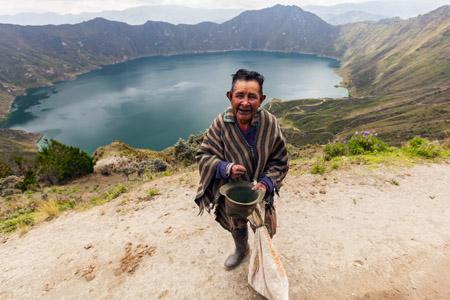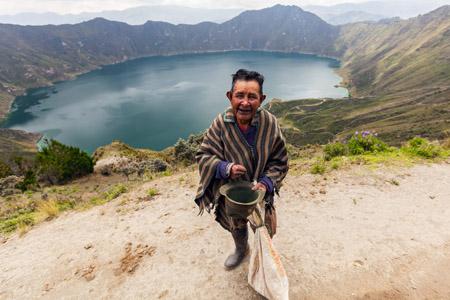
Credit: UC San Diego Health
To better understand why some people adapt well to life at high altitude while others don't, researchers at University of California San Diego School of Medicine studied red blood cells derived from representatives of both groups living in the Andes Mountains. The study, published November 7 by the Journal of Experimental Medicine, reveals that high-altitude, low-oxygen dwellers prone to chronic mountain sickness produce massive amounts of red blood cells thanks to overproduction of the enzyme SENP1.
"In addition to improving the health of millions of people around the world who live above 8,000 feet, information on how Andeans have adapted — or not adapted — to high altitude life might teach us how to speed up red blood cell production at lower altitudes, such as in anemia or when blood transfusions are needed rapidly," said senior author Gabriel Haddad, MD, Distinguished Professor and chair of the Department of Pediatrics at UC San Diego School of Medicine and pediatric pulmonologist, physician-in-chief and chief scientific officer at Rady Children's Hospital-San Diego.
Chronic mountain sickness affects approximately 20 percent of people who live at high altitudes. One critical aspect of the condition is polycythemia, the overproduction of red blood cells. Some extra red blood cells can be a good thing in high altitude, low oxygen environments — they help keep blood oxygenated — but too many thicken blood, increasing a person's risk of heart attack and stroke, even in young adults.
In the study, the team, led by Priti Azad, PhD, associate project scientist in Haddad's lab and first author of the study, collected skin cells from people living in the Andes Mountains — four healthy and five who suffer from chronic mountain sickness — plus an additional three healthy people who live at sea level, as controls. To produce enough red blood cells from each participant to study them in the lab, the researchers converted the skin cells into a special type of stem cell, called induced pluripotent stem cells (iPSCs). Then, adding a cocktail of growth factors and other molecules, they coaxed the iPSCs into specializing into red blood cells. Multiple samples were tested for each person, for a total of at least 24 iPS cell lines.
The researchers exposed the red blood cells to low oxygen conditions that mimic high altitude — five percent oxygen for three weeks. As a result, red blood cells from healthy sea-level or high altitude-dwelling donors increased a little or not at all. In contrast, numbers of red blood cells from high-altitude dwellers with chronic mountain sickness increased 60-fold.
Haddad's team wanted to understand why people with chronic mountain sickness produce so many extra blood cells in response to low oxygen. In a previous study in which the team compared the genomes of high-altitude dwellers with and without chronic mountain sickness, one gene that varied between the two groups stood out — sentrin-specific protease 1 (SENP1), which is increased in low oxygen in people with chronic mountain sickness but not healthy people. This gene encodes the enzyme SENP1, which acts as a gene regulator by removing small protein tags on transcription factors, other proteins that determine when certain genes are turned on or off.
To determine if SENP1 plays a role in high-altitude adaptation, in this study the researchers inhibited the SENP1 gene in chronic mountain sickness patients' iPSCs. As a result, the excessive red blood cell production was reduced by more than 90 percent. On the flip side, when the researchers added extra SENP1 to healthy, adapted highlander iPSCs, red blood cell production increased 30-fold, nearly recapitulating that seen in chronic mountains sickness.
Further experiments suggested how SENP1 affects red blood cell production — elevated levels of the enzyme in chronic mountain sickness in turn boost levels of several other proteins that promote cell division and survival, including VEGF, GATA1 and Bcl-xL.
Haddad and Azad are now looking forward to the next phase of their research.
"We're interested in determining the early steps in this process — how low oxygen triggers SENP1 in the first place," Azad said. "We are also investigating how existing altitude sickness medications, such as Diamox, work and whether or not it's through this same mechanism."
###
Co-authors of this study also include: Huiwen W. Zhao, Pedro J. Cabrales, Roy Ronen, Dan Zhou, Orit Poulsen, Yu Hsin Hsiao, Vineet Bafna, UC San Diego; and Otto Appenzeller, New Mexico Health Enhancement and Marathon Clinics Research Foundation.
Media Contact
Heather Buschman
[email protected]
858-249-0456
@UCSanDiego
http://www.ucsd.edu





